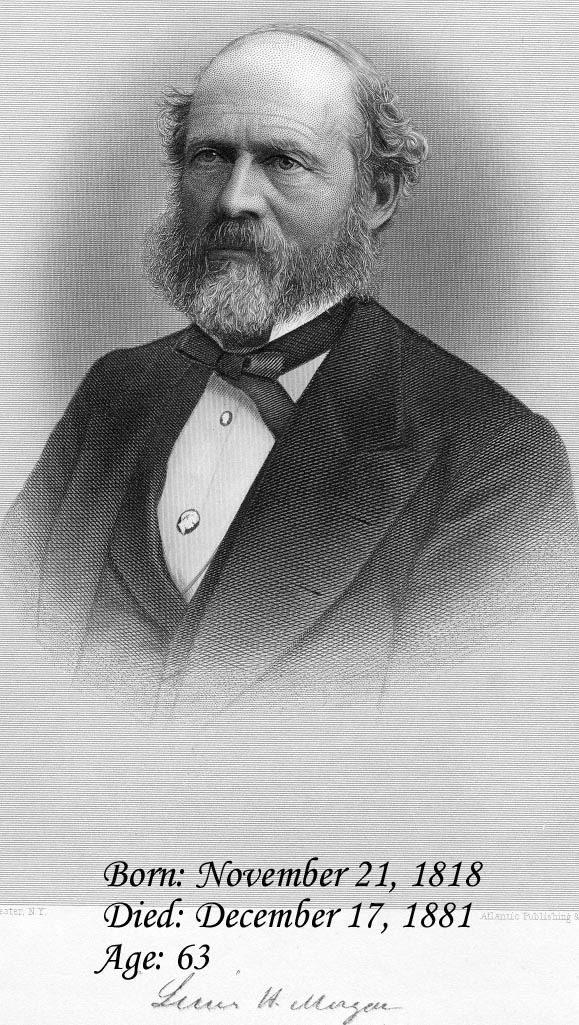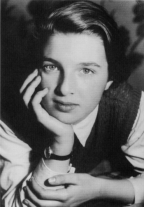Internal
Links
Top
|
Outline on the Origin of
the Family, Private Property & the State
by Friederich Engels & Karl Marx, 1884
|
|
External
Links
|
|
|
- Project: Analysis of
the Continuing Development of the Family |
Link
|
| |
- Project: The Development
of the Family & Patriarchy |
Link
|
| |
- Project: The Origin of
the Family, Private Property & the State |
Link
|
| |
Engels agrees w/ Morgan on the etiology of the development of patriarchy
after the dawn of civilization, & then Engels goes on the explore
the development of patriarchy through early historical periods |
|
| |
Henry Lewis Morgan was a pioneering 19th Century anthropologist whose
work provided the anthropological background for Marx & Engels |
|
| |
HUNTER GATHERER SOCIETIES WERE NOMADIC, HAD NO ECON SURPLUS,
MATRILINEAL, & NOT WAR LIKE |
|
|
blank
|
Hunter gatherer societies, were semi nomadic & had
little or no accumulation of wealth, & therefore status
was awarded through achievement in traditional roles, rather than through
the accumulation of wealth as is done today |
|
|
|
Hunter gatherer gender roles were differentiated, but essentially equal
in terms of equal access to resources, status, & power |
|
|
|
Male hunter gatherer roles included hunting, mentoring, teaching, making
war, & raising boys to be men |
|
|
|
Female hunter gatherer roles included gathering food, home management,
defending the home, raising babies; i.e. baby girls all the way to be women,
& raising baby boys to boy status, & then turning them over to
men to raise to men |
|
|
|
There was little or no wealth or 'surplus' accumulation in hunter
gatherer society because the primitive technology only allowed for subsistence
living |
|
|
|
In hunter gatherer society, it is estimated that females brought in
70% of the food, but the 30% of the food produced by men's hunting was
also essential |
|
|
|
Males & females could take on leadership or high status roles such
as leader, doctor, shaman, protector, etc. |
|
|
|
During the hunter gatherer era, none of the roles of leader, doctor,
shaman, protector, etc. had "gender," but they all do today |
|
|
|
The societal form of hunter gatherer society was used by Cro Magnon,
Homo Erectus & earlier, & so it is an ancient form that is still
in practice today by some humans today |
|
| |
Engels believed that in hunter gatherer society, pre- 15,000
BC,
- there was a sexual division of labor
- that primitive societies were primarily matriarchal
- the male role in conception was unknown until the end of this
era
- there was no strict monogamy, though some did adhere to it |
|
| |
CIVILIZATION EMERGES CIRCA 11 K BC ESTBING THE PRE EMPIRES
ERA, SUPPLANTING H-G SOC & ESTBING AG |
|
|
|
"Civilization" emerges circa 13 K yrs. BP during the Pre Empire
Era in the transition from hunter gatherer society to early agricultural
society |
|
| |
See Also: The Pre Empires Era |
|
| |
With the dawn of civilization, the beginning of agriculture, a surplus
of wealth could now be accumulated |
|
| |
Increases in population & the end of the last ice age forced
social change |
|
| |
Circa 11,000 BP, agriculture develops |
|
| |
See Also: The Ag Revolutions |
|
| |
See Also: The First Ag Revolution |
|
| |
The development of animal husbandry & agriculture allowed
villages to emerge |
|
| |
Circa 15 to 7,000 BC, in the early forms of society, family forms change,
at least partially as a result of increased productivity |
|
| |
As herds grew, tending the animals became man's work |
|
| |
The prehistoric warrior took second place in the home, but the
shepherd gained a new source of wealth & pushed himself ahead of woman
to be able to pass on that wealth to his children & also at this time
became aware of the male role in conception |
|
| |
Ag, including the domestication of animals, & the development of
markets, both creating increased productivity, & the first surplus
of goods for humanity |
|
| |
This surplus of wealth & inheritance allowed for inequalities
to develop |
|
| |
Among anthropologists, there is an argument over who developed husbandry
& agriculture, men or women?
But what would it prove? |
|
| |
ENGELS BELIEVES THAT CIVILIZATION BECOMES A SOCIETY DIVIDED AGAINST
ITSELF BASED ON CLASS & SEX |
|
| |
The old communal system of hunter gatherer society was broken
up & replaced by full private ownership, first of herds, &
later of land |
|
| |
In early society, there were changes in the family as well as in agriculture,
war, & slavery as a result of new knowledge & technologies |
|
| |
The amount of work also increased to take advantage of these technologies |
|
| |
Additional labor was gained as prisoners of war were turned
into slaves |
|
| |
The conversion of prisoners of war to slaves created the master
& slave societies of prehistory & antiquity |
|
| |
During the Pre Empire Era, the world population increases from 10 to
300 mm |
|
| |
Circa 7,000 BC, the first villages, that we know of; emerged in the
middle east |
|
| |
Uruk is the first known city, which existed in southern Mesopotamia,
circa 5,500 BP, had 20,000 people, slavery, armies, administration, etc. |
|
| |
The cities, city states & the civilizations of antiquity begin
during the Pre Empire Era along w/ the origin of the modern family, private
property, & the state |
|
| |
By 5,000 BP, agriculture & irrigation are established; the digging
stick is replace by the wooden plow w/ a draft animal |
|
| |
Circa 5500 BP, writing develops |
|
| |
THE 1st STRAT OF STATUS, WEALTH, POWER, ETC., I.E. THE 1ST
INEQUALITY OCCURRED WHEN CIVILIZATION BEGAN, DURING THE PRE EMPIRES ERA,
CIRCA 10 K BC |
|
|
|
Non production workers emerged resulting in the creation of status,
wealth, power, inequality, exploitation because one person could
produce more than he/she could consume |
|
| |
Non production workers include artisans, crafts workers, traders, etc. |
|
| |
Religious & political leaders gained power |
|
| |
Burial practices & housing structures became common & began
to show inequality |
|
| |
During civilization, the strongest or smartest have generally dominated |
|
| |
Men ruled other men & women w/ absolute authority |
|
| |
CONTEMPORARY FAMILY STRUCTURES DEVELOPED FROM RETINUES /
"GANGS" OF THE EARLY MID AGES |
|
| |
In the Family, Private Property & the State, Marx &
Engels examined the family & economic structures of the Iroquois Native
Americans |
|
|
|
The Iroquois Native Americans had no patriarchy, no private
property in land or other resources, no classes, no state, as we recognize
them today |
|
| |
The Iroquois Native Americans are known for their sophisticated tribal
democratic system of governance |
|
| |
Peace prevailed w/in the Iroquois tribe, but they were warlike w/ other
tribes |
|
| |
Marx & Engels hypothesized that many prehistoric societies were
similar to Iroquois, & then examined how this communal democratic structure
transformed into patriarchal, authoritarian, exploitative economic systems |
|
| |
Engels went to Greeks, Romans, Celts, & Germans to see later stages
of development |
|
| |
Engels found that the early Germans were organized into clans |
|
| |
In the German clans, kinship between the maternal uncle & nephew
(a mother's brother & her son) was more sacred & binding than between
father & son, demonstrating
matrilineal dissent |
|
| |
But in the clans of the Pre Empire Era & later, the mother right
of inheritance had already given way to father right of inheritance |
|
| |
But in the clans of the Pre Empire Era & later, communal ownership
had already given way to private ownership |
|
| |
Before the Pre Empire Era, land was owned communally & collectively
cultivated, but 150 years later the land was individually cultivated |
|
| |
Retinues, i.e. war clans or gangs in Europe, were the basis
for feudal aristocracy |
|
| |
American Indians demonstrated a pattern of war making similar to that
of the Germans in that the clans, a.k.a. retinues, were bound together
to make war |
|
| |
Quasi private & private associations formed to make war |
|
| |
For the Germans, the retinues developed similarly & later
became the basis for monarchies |
|
| |
In Caesar's time, the retinues were subordinate to the clans,
but this changed |
|
| |
150 years after the Roman Empire, the retinues became independent
of the community |
|
| |
The retinues no longer turned over the plunder to the clan,
but kept it for themselves |
|
| |
Retinues could only be kept together by frequent wars & plundering
expeditions, which became ends in themselves |
|
| |
When the Roman Empire disintegrated, it was from it's manors
that the retinues formed which eventually created the social order of the
nobility |
|
| |
Thus, while early communally oriented clans had little private property,
as the more war oriented retinues developed, they created private property
that at first belonged only to the sub-class of the retinues, & eventually
to each individual warrior |
|
| |
FOR CONFLICT THEORISTS WOMEN'S
LIBERATION CAN ONLY OCCUR WHEN THERE IS ECON LIBERATION |
|
| |
The solution to patriarchy, for Engels, lies in socialism, where:
- housekeeping would become a communal effort again.
- education will become public
- money, wealth, & power would not influence the marriage
partner choice
- marital unions would become voluntary rather than arranged |
|
| |
For Engels, women's liberation would come about as socialism
developed |
|
| |
Engels correctly predicted that as women's role increased in the
public sphere, women's home work & child care would decrease as
they gained more power |
|
| |
For Engels the origin of the family, private property, & the
state are integrally related, in that: |
|
| |
- patriarchy develops, as Morgan saw it, as a result of the development
of the first, minimal surplus, fueling men's desire to control their bequeathal |
|
| |
- private property develops as society develops even more surplus allowing
warriors to become independent of the community & keep plunder for
themselves |
|
| |
- the state develops as a means of ensuring private property in a system
outside of might makes right, allowing those w/ the most wealth to enforce
stratification, & preserve their wealth, based on the law rather than
power |
|
| |
CRITICAL OBSERVATIONS INCLUDE THE QUESTION OF WHO DEV & CONTROLLED
ANIMAL HUSBANDRY & HORTICULTURE? |
|
| |
Why did men control the herds & agriculture? |
|
| |
Men may have controlled the herds & agriculture because men were
the hunters & were more likely to deal w/ animals |
|
| |
Men may have controlled the herds & agriculture because men traditionally
saw their power in hunting as linked to animals |
|
| |
Even if women domesticated animals, men may have seen it as
their domain |
|
| |
Men may have controlled the herds & agriculture because men &
the animals had to roam more, while women & children stayed in the
encampment |
|
| |
Why should herds differ from other forms of property? |
|
| |
Herds were not a unique kind of property that caused patriarchy, rather
it was the fact that now society was producing a surplus that allowed for
the institution of private property to develop. Herds were integral
in the creation of the surplus value |
|
| |
For Zeitlin, it is the growing power of the retinues that represents
men's great rise to power |
|
| |
It is in the retinues where young warriors consolidated power
& became kings |
|
| |
It is the rulers of the retinues who estbed themselves in power &
changed the power relations btwn the commune & the state & allowed
men to control patterns of descent & inheritance |
|


 Marx, Engels, & Marx's Family
Marx, Engels, & Marx's Family
